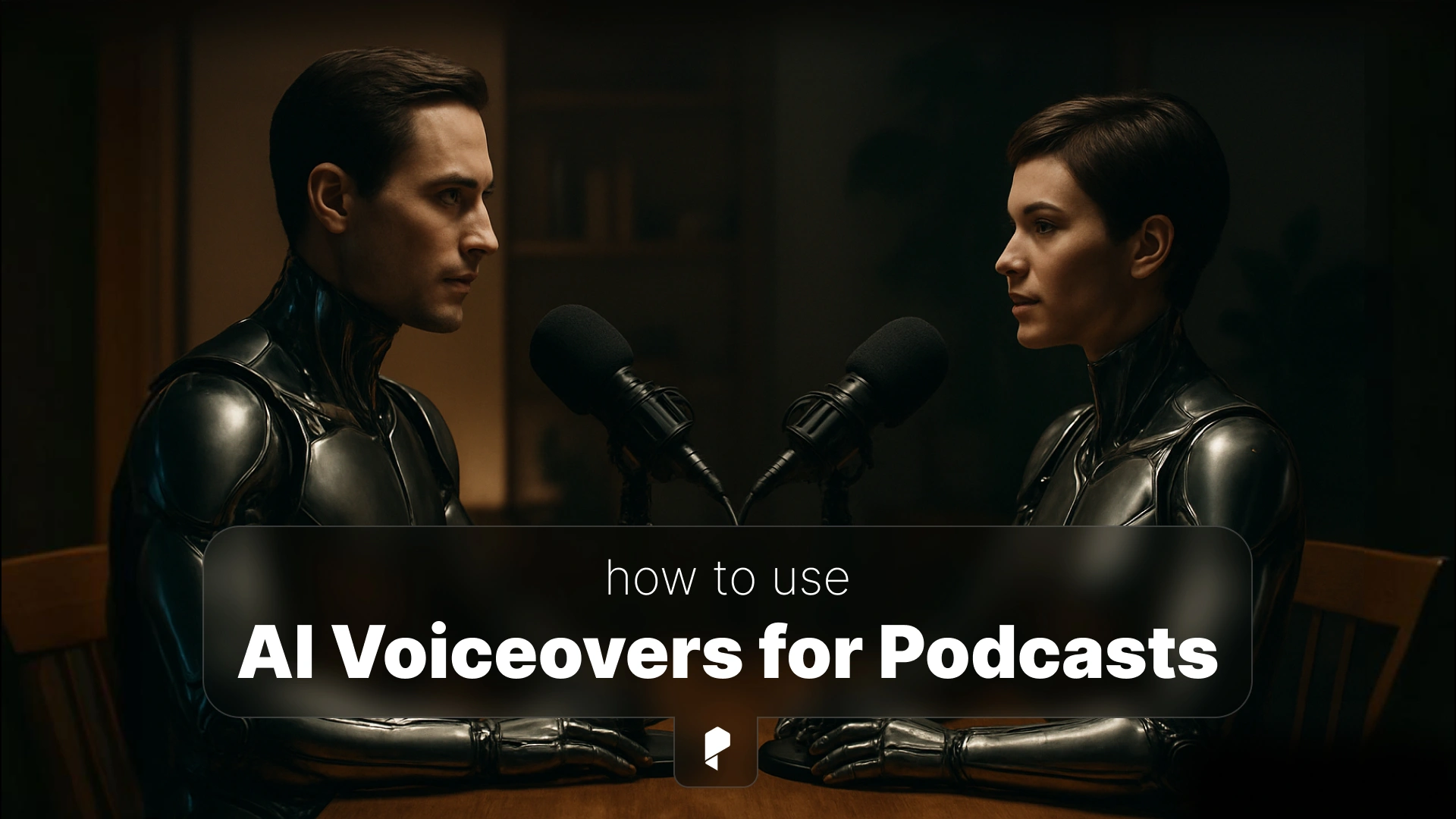AI Voiceovers for Podcasts & Audiobooks: A Complete Guide

Hiring professional narrators or voice actors often requires large budgets, long production timelines, and repeated studio sessions for edits. For independent authors and podcasters, this barrier can prevent projects from ever getting released.
That’s where AI voiceovers for podcasts and audiobooks come in. Thanks to recent advances in AI text-to-speech for narration, creators now have affordable, fast, and scalable tools that deliver natural-sounding voices ready for long-form content. Whether you’re launching your first podcast or publishing your debut novel, AI narration makes professional-grade audio more accessible than ever.
The Rise of AI in Audio Content
Parallel to this growth, AI text-to-speech technology has evolved dramatically. Gone are the robotic voices of the past. Today’s AI audiobook generators use deep learning and neural networks to mimic human speech patterns, pauses, and intonations with remarkable accuracy.
This evolution means creators can now rely on AI not just for short snippets or announcements but for full-length narration projects, from serialized podcasts to multi-hour audiobooks.
👉 For a deeper look at the technology powering this shift, check out AI Voiceovers: The Complete Guide.
Why Podcasters Are Turning to AI Voiceovers
- Faster publishing: With AI narration, podcasters can generate high-quality audio in minutes instead of days, allowing them to keep up with rapid release cycles.
- Cost savings: Independent creators don’t always have the budget for professional studios or recurring narrator fees. AI tools drastically reduce production costs.
- Creative flexibility: Want to test different voices, accents, or tones? AI voiceovers make it easy to experiment and refine until you find the right fit for your brand.
By using solutions like Pixflow AI Voiceover, podcasters can streamline their workflow, saving valuable time and money while still delivering professional audio experiences to their audience.
Professional Video Templates
AI Voiceovers for Audiobooks: Opportunities for Authors
- Affordability: Self-published authors can now create audiobooks at a fraction of the cost, making it easier to expand into the lucrative audiobook market.
- Multi-language reach: With AI narration, books can be produced in multiple languages, opening doors to international readers without the need to hire multiple narrators.
- Consistency for long projects: AI ensures stable tone and pacing across many hours of narration, solving one of the biggest challenges in human-based recording sessions.
For authors wondering “how to use AI voiceovers to create audiobooks”, the process is now as simple as uploading a manuscript, selecting a voice, and fine-tuning the pacing. The result: a polished audiobook that’s ready to publish and distribute globally.
Strengths of AI Narration in Audio Production
- Multi-language support: Authors and podcasters can instantly localize their content for international audiences.
- Customizable delivery: Voices can be adjusted for tone, pitch, speed, and style, allowing creators to match narration to different genres. From business guides to fantasy storytelling, can all be covered.
- Accessibility benefits: Using AI voices for storytelling also enhances accessibility for visually impaired audiences, making more content available to everyone.
These strengths demonstrate why AI is quickly becoming a go-to solution not just for cost-conscious creators but also for those seeking innovation in how stories are told and shared.
👉 To explore other advantages, see Benefits of AI Voiceovers for Content Creators.
Limitations to Be Aware Of
- Emotional depth: AI voices are improving, but they still struggle to fully capture the emotional nuances of a skilled human narrator. For genres like drama or poetry, this can be noticeable.
- Risk of monotony: Long-form narration can sometimes sound repetitive or flat if the pacing isn’t carefully adjusted.
- Platform restrictions: Certain distribution platforms, such as Amazon ACX, have strict policies about AI narration. Authors should verify whether AI-generated audiobooks are accepted before investing time in production.
This raises the ongoing debate: can AI narrators replace human audiobook voice actors? For some projects, yes, but for emotionally rich or character-driven works, humans often still have the upper hand.
👉 Learn more about this comparison in AI Voiceovers vs. Human Voice Actors: Pros & Cons.
Choosing the Right AI Voiceover Tool for Podcasts & Audiobooks
- Natural pacing and flow: Long-form content requires smooth delivery that doesn’t fatigue listeners.
- Editing control: The ability to adjust pronunciation, pauses, and emphasis is crucial for storytelling.
- Multi-language and voice options: Choose platforms that offer flexibility for global audiences.
- Export quality: Ensure the tool supports high-quality audio formats for professional distribution.
For recommendations, check out our in-depth guide: Best AI Voiceover Tools in 2025. And if you want to start experimenting right away, try Pixflow AI Voiceover that is designed to handle podcast episodes and audiobooks with professional polish.
Best Practices for Using AI Narration in Long-Form Audio
- Refine your script: AI voiceovers work best with clear, concise sentences. Edit for flow and avoid overly complex phrasing.
- Break content into sections: Long-form narration is easier to manage and sounds smoother when processed in smaller chunks.
- Mix with sound design: Adding background music, ambient sounds, or intro/outro effects can elevate the listening experience.
- Human review: Always listen through the final recording. A quick edit can eliminate awkward pauses or mispronunciations.
For podcasters wondering “how podcasters can save time with AI voiceovers”, following these best practices can cut hours off production schedules while maintaining professional quality.
The Future of AI in Podcasts and Audiobooks
- Emotionally adaptive narrators: Future AI systems will analyze text for sentiment and adjust delivery dynamically, creating more lifelike performances.
- Hybrid collaborations: Many professionals predict a workflow where AI handles the bulk of narration while humans refine emotional peaks and storytelling elements.
- Interactive formats: With smart assistants and immersive apps, we may see using AI voices for storytelling evolve into interactive audiobooks and personalized podcast experiences.
The future is not about replacing humans entirely but about expanding creative possibilities, making audio storytelling more accessible, scalable, and innovative than ever.
👉 For inspiration on multimedia projects, check out How to Create Stunning Videos with AI Voiceovers.
Final Thoughts
While challenges remain, the benefits like multi-language support, customizable tones, and affordability, make AI an invaluable tool for today’s content creators.
If you’ve been wondering whether to try AI narration, now is the time. Explore tools like Pixflow AI Voiceover and start bringing your stories to life faster and more affordably.
If you buy something through our links, we may earn an affiliate commission or have a sponsored relationship with the brand, at no cost to you. We recommend only products we genuinely like. Thank you so much.








